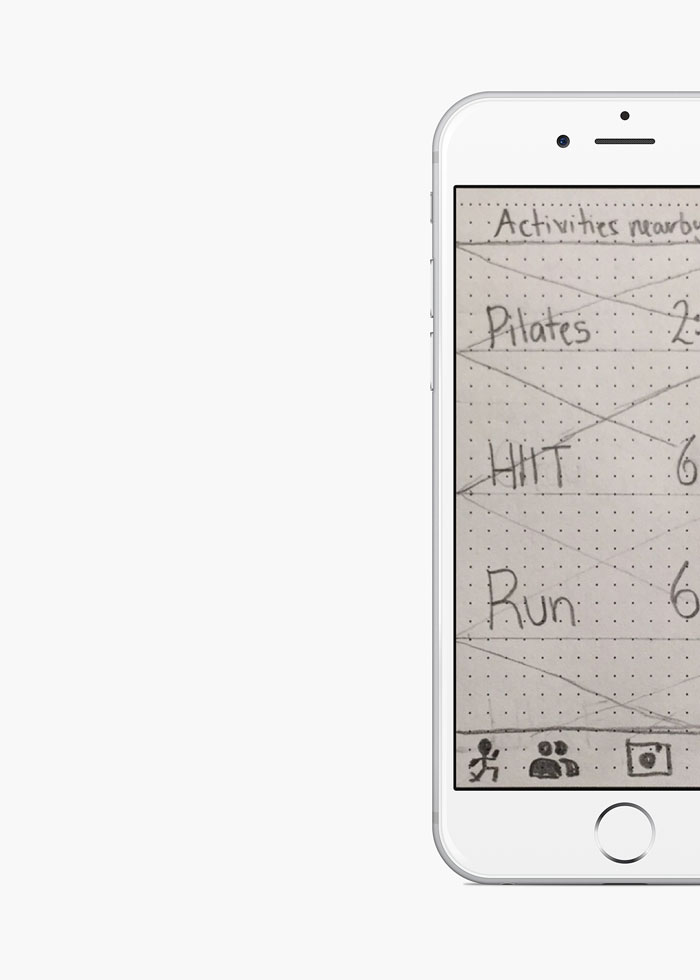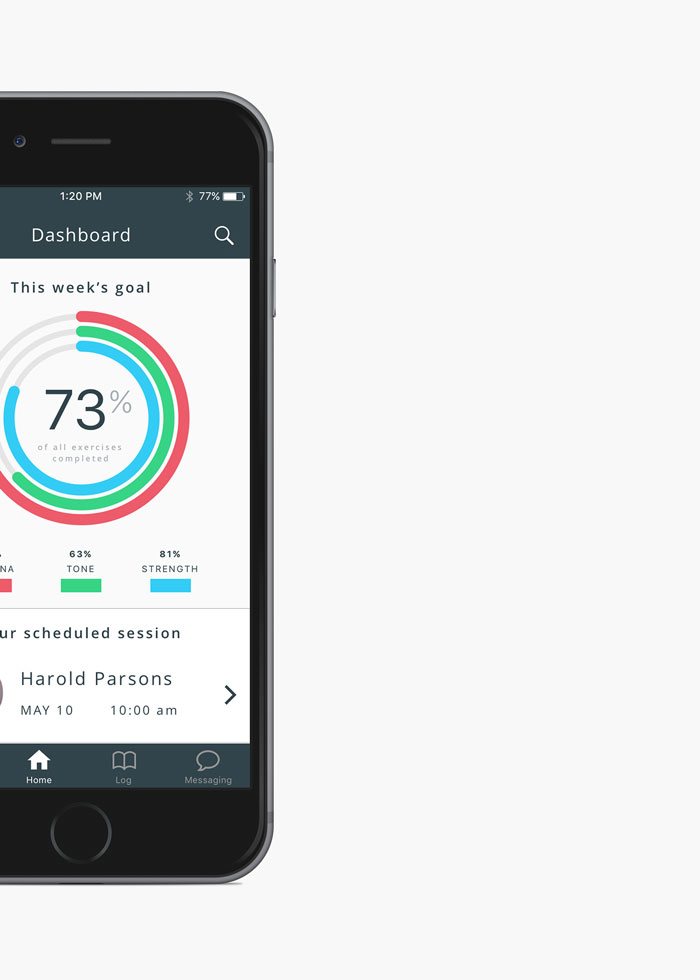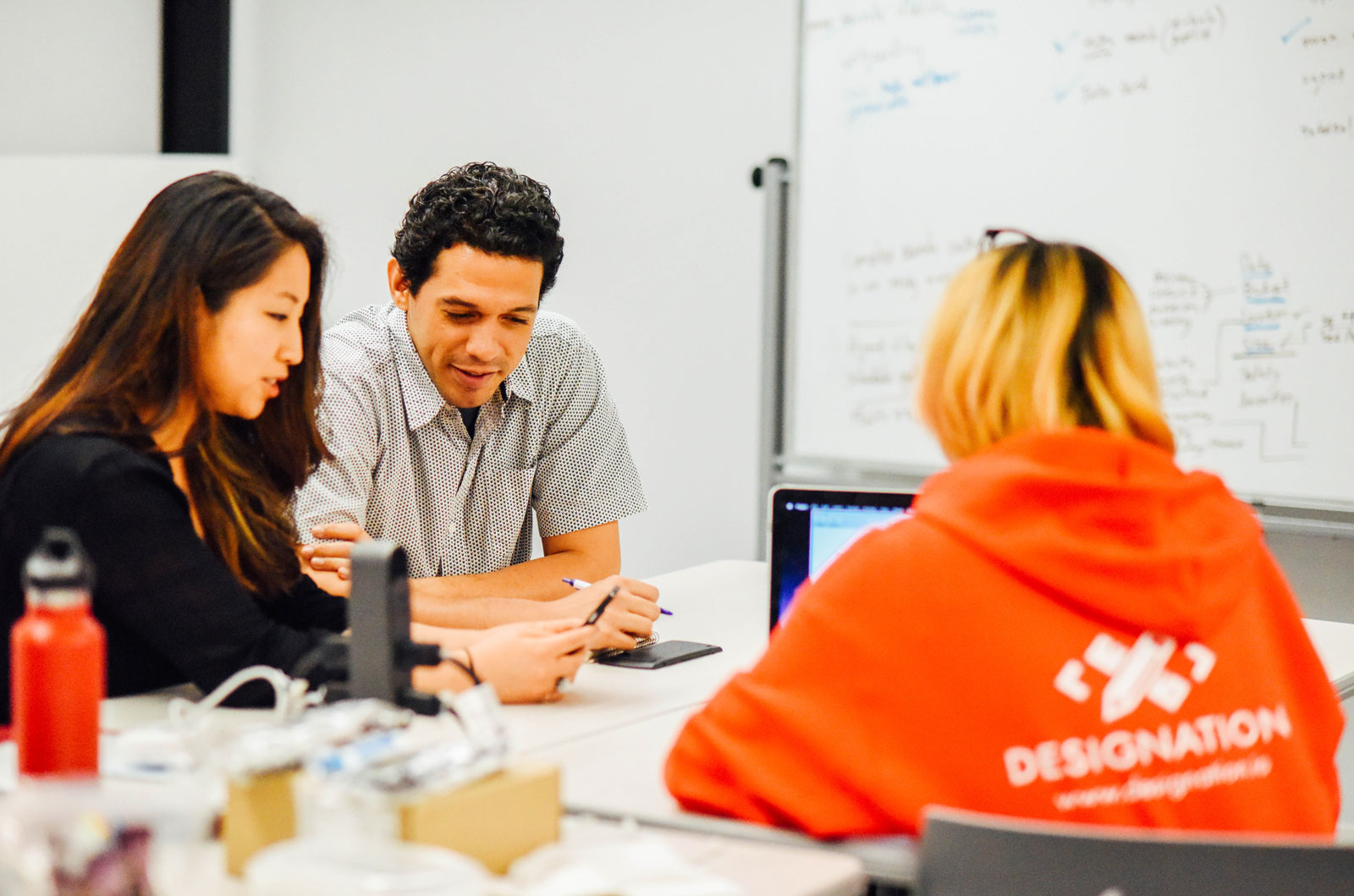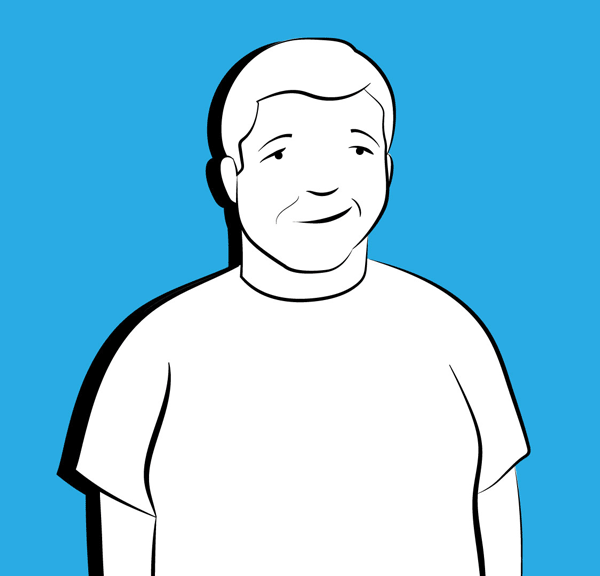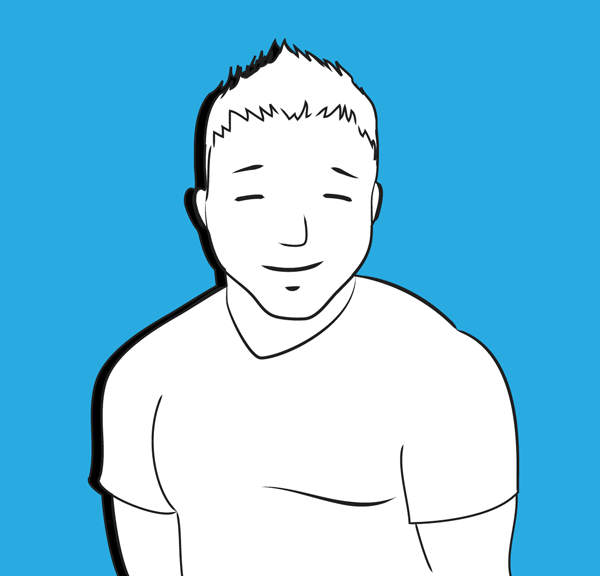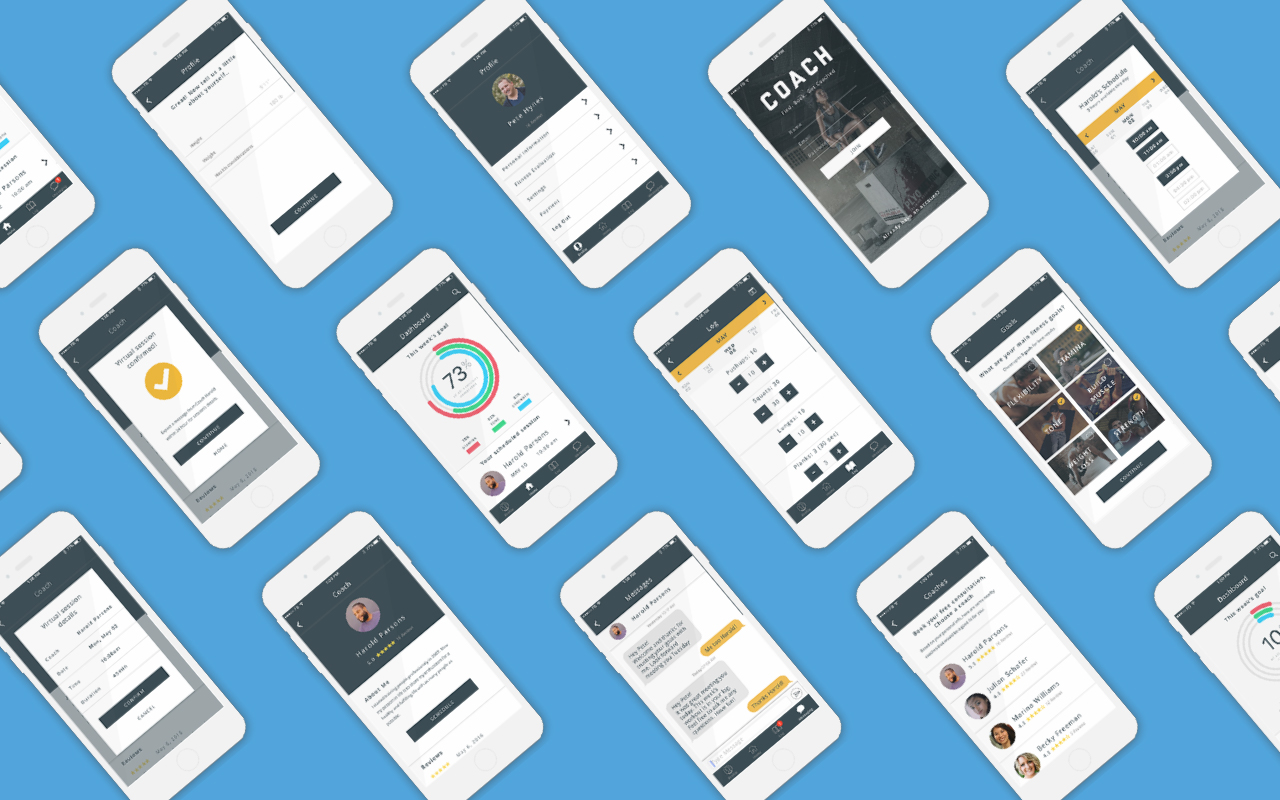
COACH
COACH is an app that connects users with a professional personal trainer online or in person. These trainers build weekly exercises that target the user's goals. It has a built-in messaging system for them to communicate and follow up on the user’s progress.
- Client: DESIGNATION (mock-up project)
- Role: UX / UI designer
- Date: Apr to May 2016 (6 weeks)
- Team: 4 UX/UI designers
- Tools: POP, Axure, InVision, Illustrator, Photoshop, Sketch
- Deliverables: competitive analysis, personas, style tile, prototypes
THE BRIEF
The fitness industry is experiencing disruption due to advancement in technology. Today’s consumers are embracing wearable technologies and other activity-tracking products more than ever before. However, despite the availability of personal metrics, people continue to struggle to maintain a healthy lifestyle.
My team and I brainstormed a strategy to find out why people weren’t reaching their fitness goals. We conducted interviews and a survey to gather enough data for our research. We wanted to know how people defined healthy living, their efforts to achieve that lifestyle, their goals, and frustrations. Our main takeaway was that most people want to live a healthy lifestyle but don’t feel motivated enough to make it a priority.
Root causes were:
- Lack of motivation
- Accountability
- Accessibility
"Healthy living means being active and feeling good about yourself.”
Our Data
We gathered data from online surveys and learned the following fitness habits from people.
I kept in mind where our users preferred working out when tackling the issue of accessibility. Since the majority of our subjects said they got their fitness information from people more advanced than them. We concluded that other than accountability, learning from a trustworthy source was a key element for our users. We deduced that for our app to motivate the user, it had to cater to their personal needs and be an authoritative source of information.
Based on the data we created, the characters Pete and Matt encapsulate our user’s struggle with their lack of motivation and constant failure to achieve fitness goals. We felt the user’s pain and positioned ourselves to design a solution.
Neither of our personas know how to reach their goals or have someone to hold them accountable. Both can benefit from a partner who’s more knowledgeable than them, who can show them the ropes, and push them towards their goals. What are their current options?

We researched competitors and learned that few fitness app gave users personalized exercise options and most only worked as trackers. One of the few that offered personal options was Fitstart, but it had the shortcoming of not overseeing the user’s form. This oversight would have led Pete or Matt to injure themselves. Another app that was not just a tracker was The Fabulous, which worked as a motivator to help the user build healthy habits. Its problem was that it only focused on broader solutions, it didn't offer targeted, individualized options. Giving Pete and Matt's options based on their goals without losing sight of the root causes adds value to our app and gives us an edge in the market.
PUSHING THEM FORWARD
We devised a set of rules to set the standard of our designs before coming up with ideas for our product.
Anytime, anywhere
The user has to be able to use the solution wherever he is. Going on vacation will not be a reason for our user to miss his fitness goals.
Pete’s travels for his job. Because of his seeming lack of stability, he might choose to avoid establishing an exercise routine.
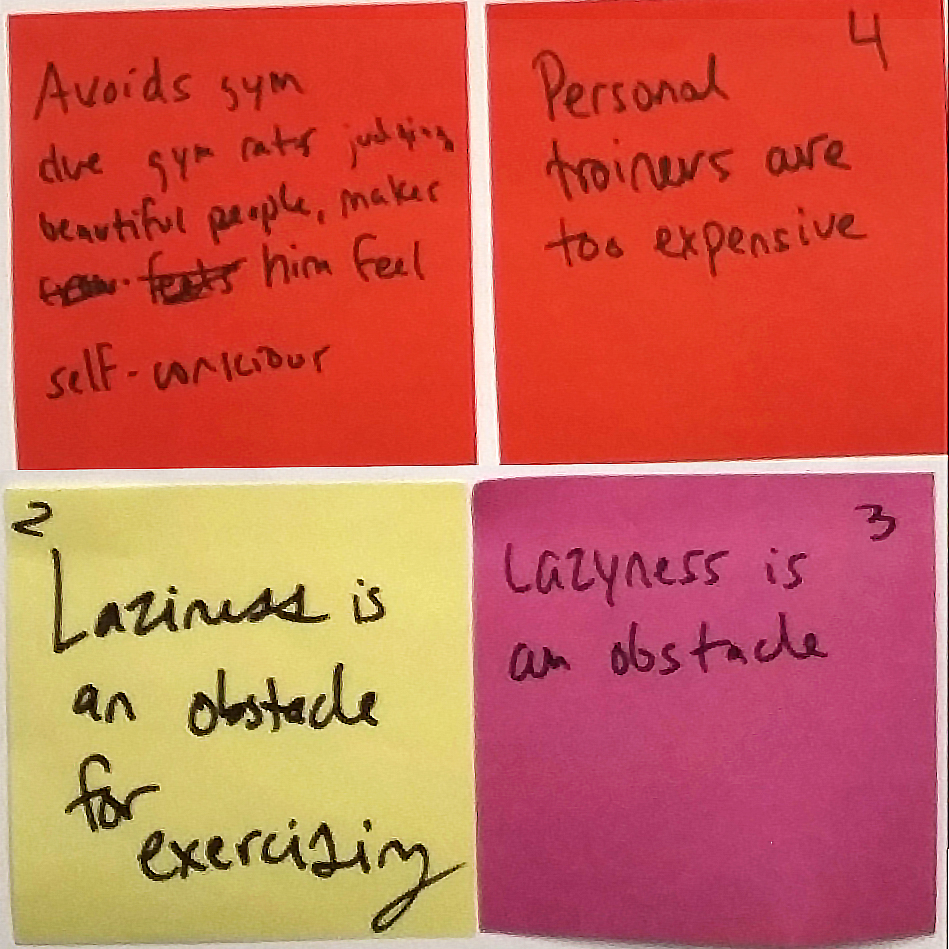
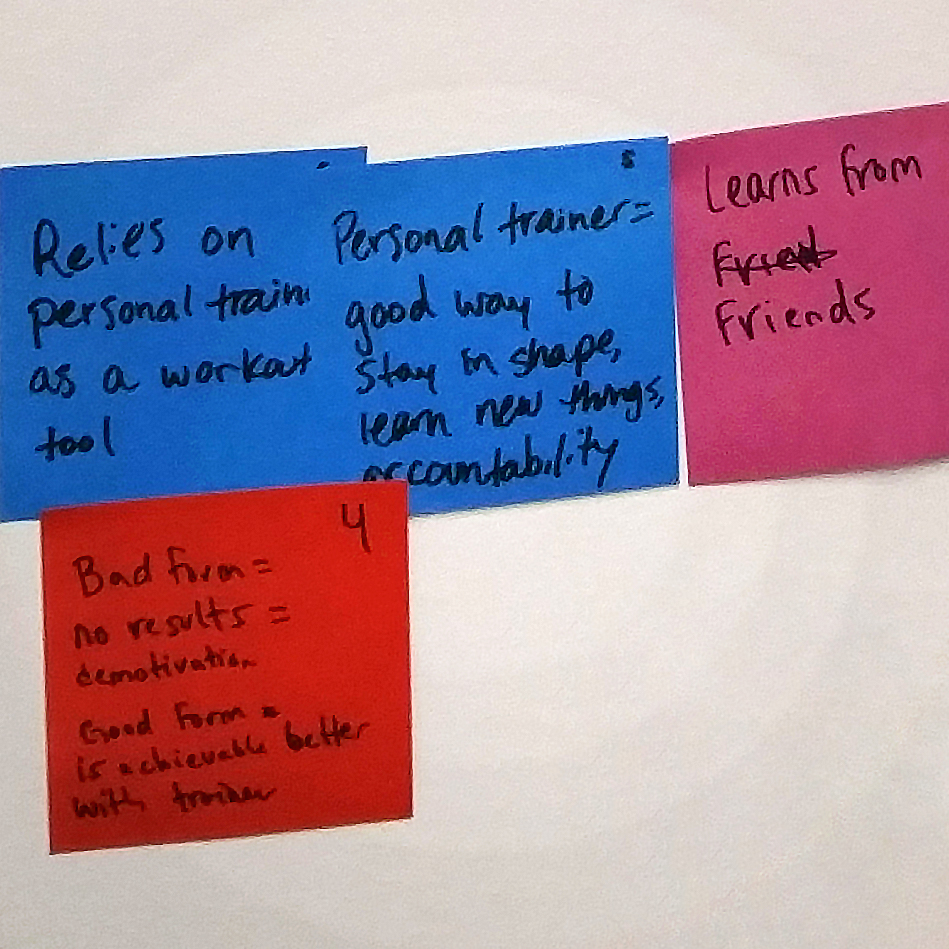
Know your stuff
Our user must trust that he’s learning from someone who know best. We must be the ones who know best.
Pete needs to have someone who knows enough about fitness to be able to explain in simple terms. Matt, on the other hand, wants to feel like he’s learning from someone who knows more than him.
Drop and give me 20
Be a source of accountability. Show the user that we care about his goals as much as they do.
Accountability is a great source of motivation for Pete and Matt. They don’t like disappointing those who take the time to help them achieve their goals.
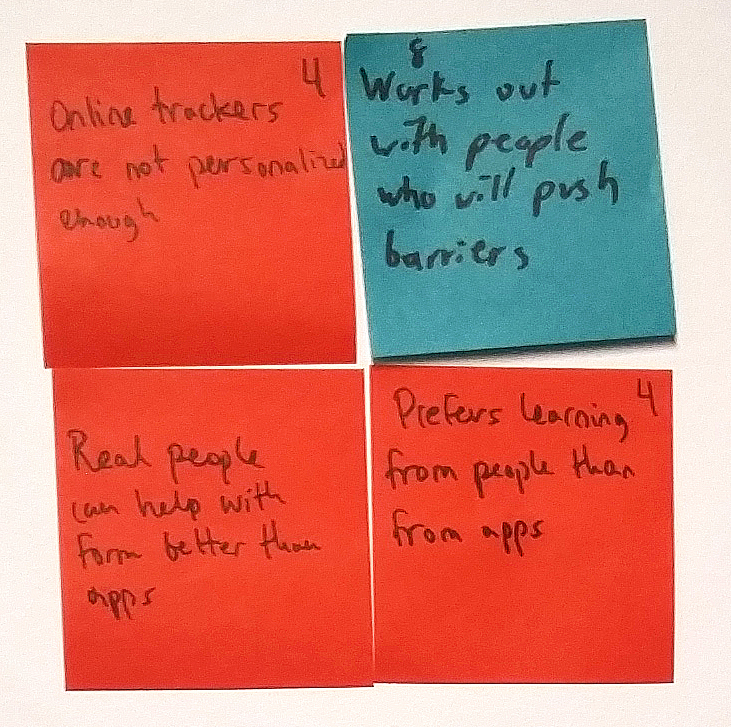
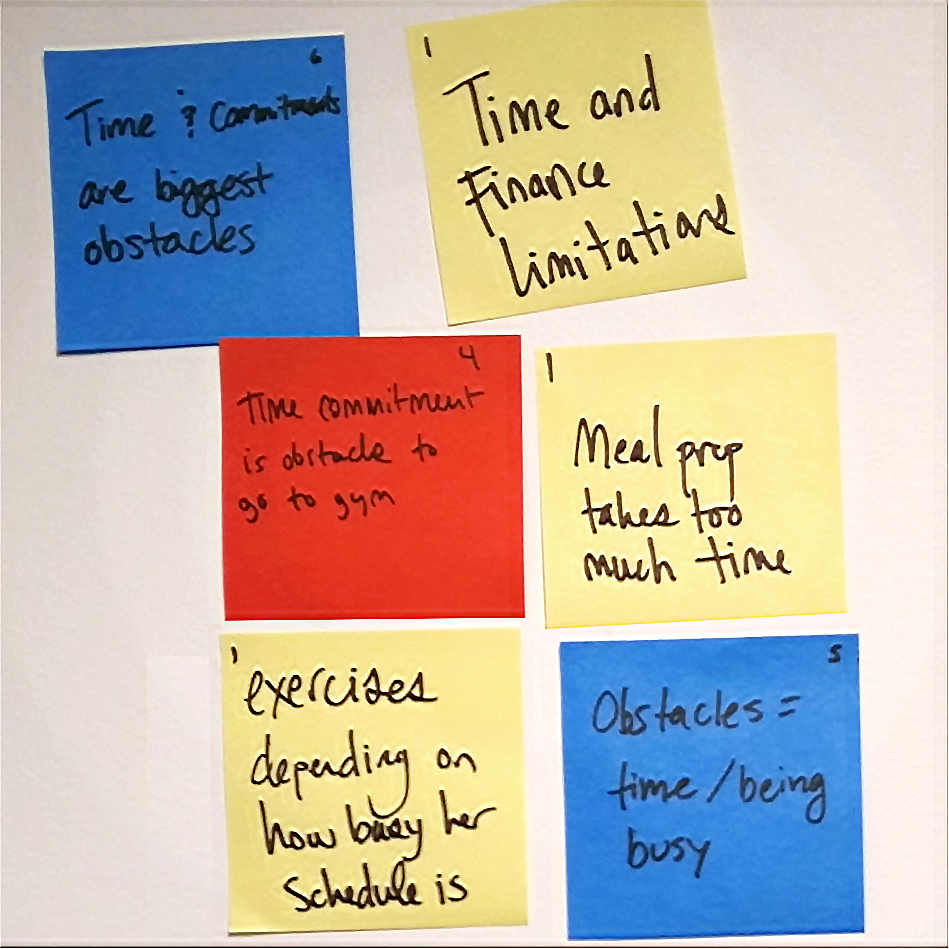
Don’t waste my time
The user’s time in the app must push him toward his goals, nothing less.
Pete is a busy person, he needs to feel that his time in the app is not taking “productive” time away from him.
We felt that Pete is struggling more than Matt establishing a healthy life. Helping Pete became our primary concern and main focus since making a product for him benefits Matt as well. Each of us came up with a few concepts, discussed them and then singled one out for testing. With a series of interviews, we pointed out which concept pushed Pete into action and why. (chosen concepts are bold)
My concept
- Custom time training regime. Designed to help Pete and Matt reach their primary and secondary fitness goals.
- Proactive activity recommendations based on Pete’s interests. Alert preferences are set in the onboarding and delivered by geolocation.
- Training regimes with companions, independent of fitness compatibility.
David’s concepts
- Pete commits to programs of a certain length and gets paired with a real trainer who checks on him online.
- Pete or Matt join support groups with other people (they may or may not know). They share their progress through a forum with the option of competing for prizes between them.
- The app locks Pete out of using his phone until a scheduled exercise program is complete.
Jared’s concepts
- An app that rewards points to Pete every time he works out. With the points, Pete can redeem gift cards or enter sweepstakes.
- Pete or Matt can schedule a personal trainer and work out in any gym. The app recommends trainers based on needs and location.
- Pete and Matt can create and then share their personal workouts. They can also search workouts by other people.
Misaki’s concepts
- An app that charges Pete or Matt money whenever they don’t meet their daily workout goal. This money gets sent to a charity of their choice.
- An app that makes Pete join a group. His group competes with other groups on sports or other fitness activities. The losing group donates money to charity.
- An app where Pete can find nearby friends to workout with. They plan dates to work out, do a sport, or take a class together.
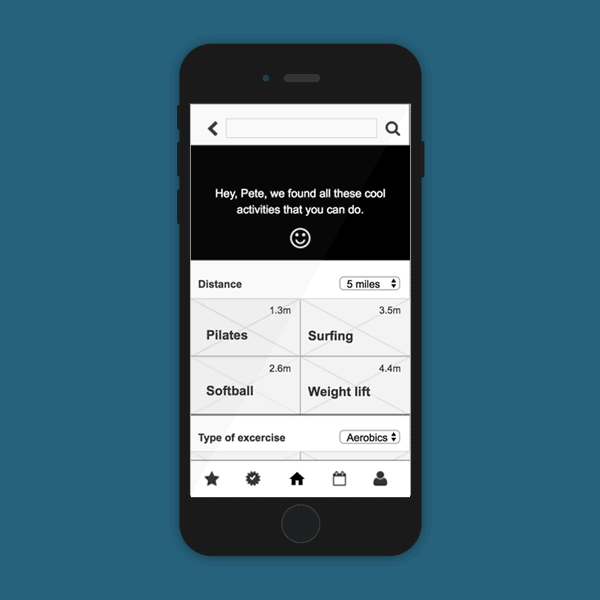
My prototype’s findings
My app relied too much on the onboarding process and lacked clear language. It initially led people to think that Pete had to join a group to work out. David’s and Misaki’s app did make Pete join a group. My app encouraged Pete to enroll in exciting activities he can do on his own like diving, biking, and other gym alternatives. Optionally he’ll meet health-oriented people and become more health aware by association.
View my prototype:
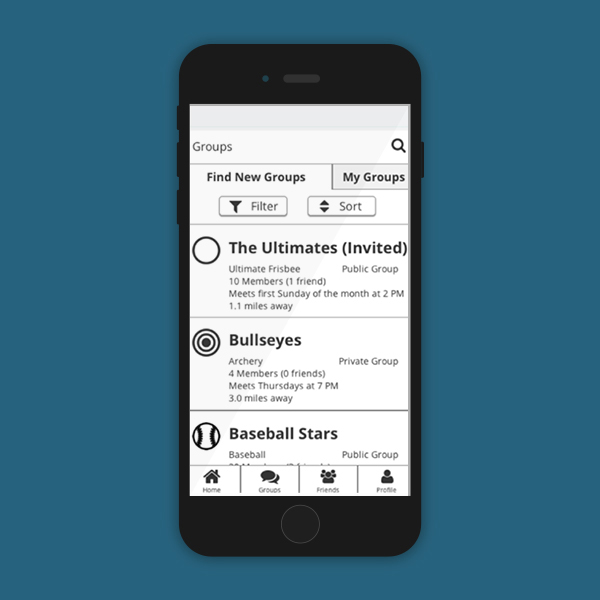
David's prototype
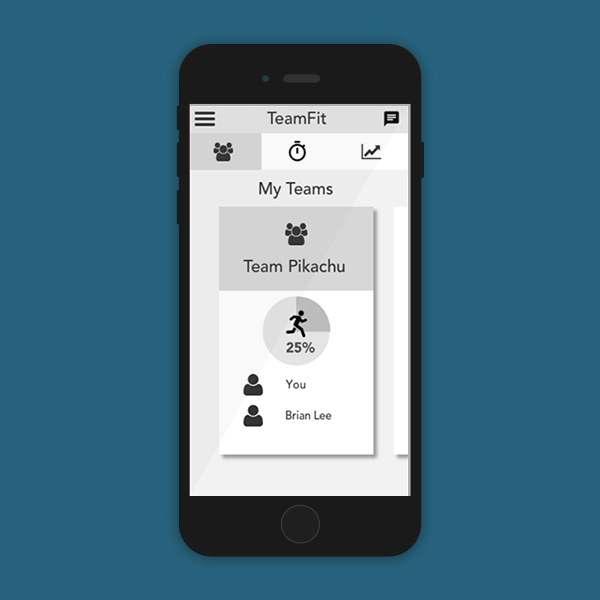
Misaki's prototype
David and Misaki's prototype findings
Users reacted positively to how David, Misaki, and my app offered fun and different alternatives to the gym. But disliked how David and Misaki’s app made Pete join groups in order to work out. We know that Pete can be sociable, but forcing him from the start to be social in an exercising environment will be uncomfortable and unappealing.
Jared's prototype findings
Interviewees felt that Jared’s app was easy to use and navigate. They also said that they wouldn’t use it themselves, but they would recommend it to a gym going friend who might find it useful. Most testers felt that having a personal trainer checking in motivates Pete.

We found these trends: interviewers felt that booking a coach pushes Pete into action; they want to work out doing something other than going to the gym. They’d rather workout by themselves and not as part of a group.
Now the team faces a problem. Our best scoring app is not appealing enough for Pete to download. Pete avoids the gym because he dislikes feeling awkward. Why will he download an app that makes him go to the gym? Users repeatedly said they don’t like going to the gym so they wouldn’t use the app (Pete), but they’d recommend it to a friend who goes to the gym (Matt). They did, on the other hand, express interest in fun alternatives to the gym (Pete more than Matt). I argued that we have to stay committed to Pete and not ignore the user’s feedback. The team finally decided to bring together the user’s wants into one product.
We merged concepts and named it COACH, an app to book personal trainers and other types of fitness professionals. These specialized coaches show Pete the ropes in any activity he wants to learn. He can lift weights, try a class or sport until he got comfortable enough to do it on his own. Expert coaches help Pete feel comfortable on a one on one session. And because Matt already knew how to train, he can now book a professional anywhere he wants.
Each of us proposed a different visual design for the app. We then tested them to choose the most appealing and functional one. We got split results between Misaki’s and Jared’s app for favorite designs.
Misaki's app findings
POSITIVES
- Good response to activity grid view/use of pictures
- Simple and easy three-step booking flow
- Clear confirmation screen after booking a coach
- Best-received filtering and sorting system
- A bottom navigation system to easily find information
POSSIBLE PROBLEMS
- Not enough information in trainers' bio page
- Colors were too dark/impersonal
- Didn’t have coach calendar and history of views
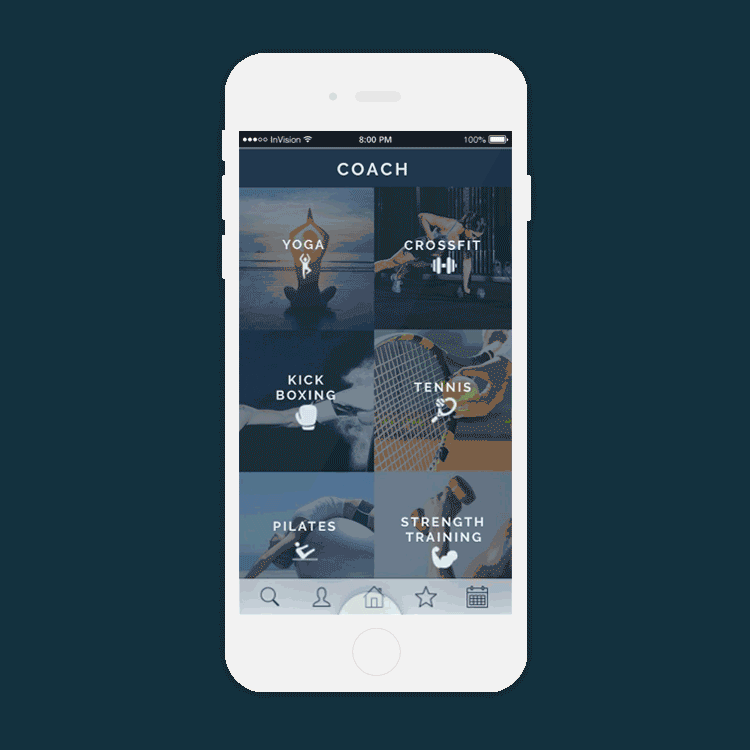
Jared's app findings
POSITIVES
- Everyone liked the visuals/use of big pictures – the splash screen says “personal training”
- The color scheme had a sport, intense, gym locker vibe, but also clean and sophisticated. Ranked as favorite in most interviews
- Nice logo, the collegiate lettering was well liked
- Likes the contact page for the trainers – Repeatedly suggested adding a direct communication messaging system within app
POSSIBLE PROBLEMS
- Pictures took focus away from the tabs in the home screen
- Confusing confirmation pop up – Not clear for users if they booked already or not (didn’t feel the confirmation # was needed). Need a clear way of saying “confirmed” or “added to schedule”
- Would have liked to see a monthly calendar on the schedule page
- Difficult navigation
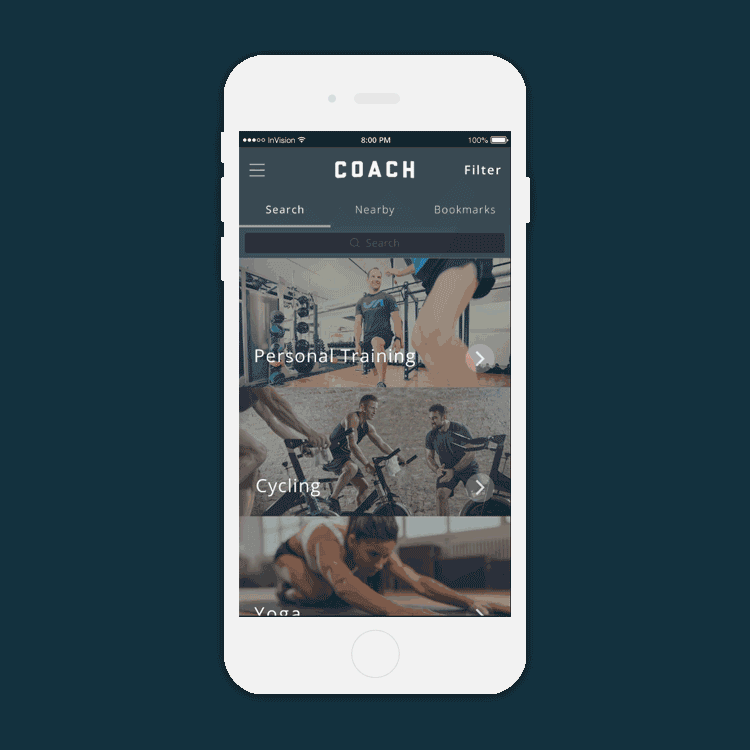
According to testers, Misaki’s app had the easiest flow and usability. Jared’s app was the most appealing, but it was hard to navigate. We decided to use Misaki's booking flow and navigation. Then we used Jared's visual style and brand adjusted to test results.
REALITY CHECK: GYM ≠ USER
No gym will let a trainer walk in to meet with a non-gym member, train them and then leave. Gyms make money out of memberships, personal training, and classes. The financial, safety and legal details of how the app worked were not taken well into account. When our instructor pointed this out, I knew we needed to look back at our research. Our best option was to look for another, realistic way to solve Pete’s problem.
We found that David’s third original concept was our best option. He initially proposed an app where: “Pete commits to programs of a certain length and gets paired with a real trainer who checks on him online”.
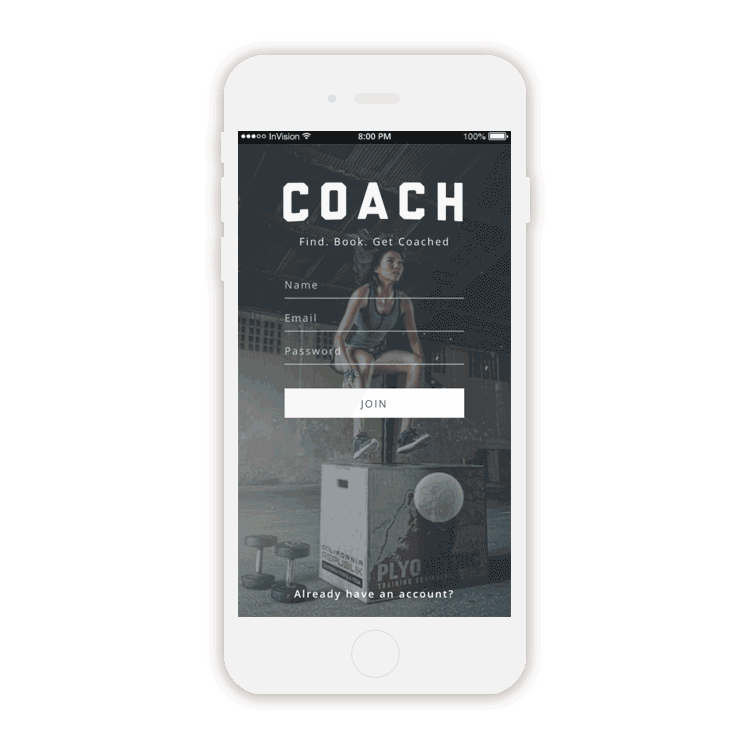
First, it’s accessible to Pete anytime, anywhere. The trainer trains him in his location a few times a month. It also checks on Pete online to monitor his form and discuss goals.
With this version of COACH Pete enters his fitness goals when signing up. The app suggests nearby certified trainers who specialize on his goals. He’ll then book a session with a coach of his choice.
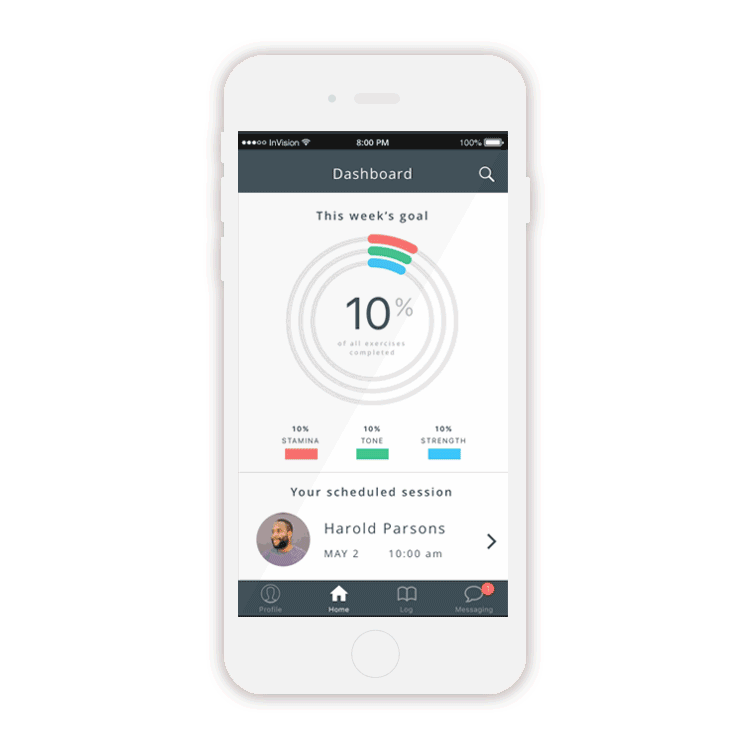
Second, it addresses the problem of motivation by having a coach that knows his stuff build a personalized weekly plan for Pete to follow through. He can start at his own fitness level and work his way up.
A notification informs Pete when a coach sends him a personalized welcome message. Through the on-platform messaging system, Pete can talk with the coach about goals, concerns and other relevant information. Then they’ll discuss the details of their initial, in-person or online, session. This first session is for the coach to assess Pete’s physical abilities. From here the coach can build Pete’s exercise routine for the week. The routine will be accessible to Pete as a checklist.
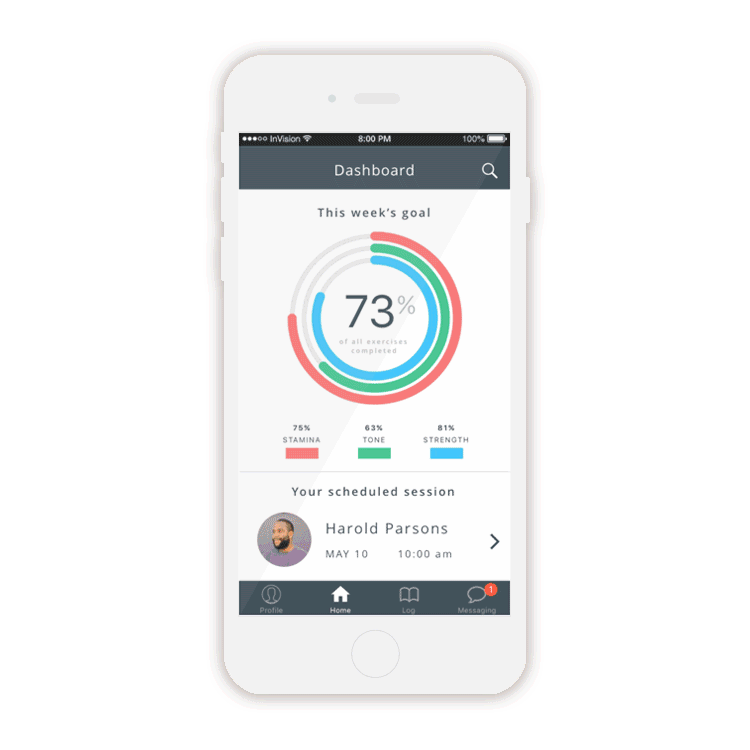
Third, it keeps Pete accountable by having the trainer stay in touch with him. He makes sure that Pete is following his weekly fitness plan, and makes him drop to give him 20 if needed to be.
The graph in the dashboard serves two purposes: the first is to act as a source of motivation to Pete by helping him visualize his routine progress; the second is to keep the trainer accountable by measuring how each exercise factor towards Pete’s goals. If Pete works out consistently and doesn’t see any results, for example, he can address his concern with the coach. Control of expectations empowers Pete to take responsibility for his training.
The new version of COACH solves the issues just pointed out that surfaced in our initial research. It also tackles the product’s feasibility and viability issues pointed out in the final stages of conceptualization. But is also makes the product easier to market by adding value to those independent trainers. They have the option to use the app as their main or partial source of income. The convenience of booking many clients virtually gives them the freedom to train as many clients as they can handle on their own schedule. These are all assumptions that need to be researched further to be confirmed or denied. We would start by establishing if the rating system and graphs are an effective source of accountability for trainers.
BACK TO AN IDEAL WORLD
After researching the efficiency of the graph and rating system, devising the following features will likely add value to our product. These are recommendations to keep in mind for future considerations when time and money are no longer a restriction.
First, a desktop version of the app where the user can see their performance graph with details, calculate their progress and contact the coach. This alternative gives Pete another level of accessibility in case his mobile device is unavailable.
Second, a blog with educational fitness information for Pete to learn from. The coach will send personalized resources to help Pete learn about his individual process.
WHAT WE LEARNED
Focusing on the user is not enough. It is also my responsibility to deliver a product that is not only ideal but feasible. One cannot live without the other. This fact pivoted our attitude and made us come up with a better product. It might be okay to have an unpractical mindset while idealizing the concept. But testing must be used to match the technology with how the user thinks the app should work. Doing a robust domain research and asking better questions is key to matching the user’s mindset and weed out impractical possibilities. Users are smart and point out things that don’t make sense. Questions like: “Do I have to be a member of that gym to train with this coach?” should’ve been enough to point us in the right direction. Making us do further research to adjust the concept over and over again.
